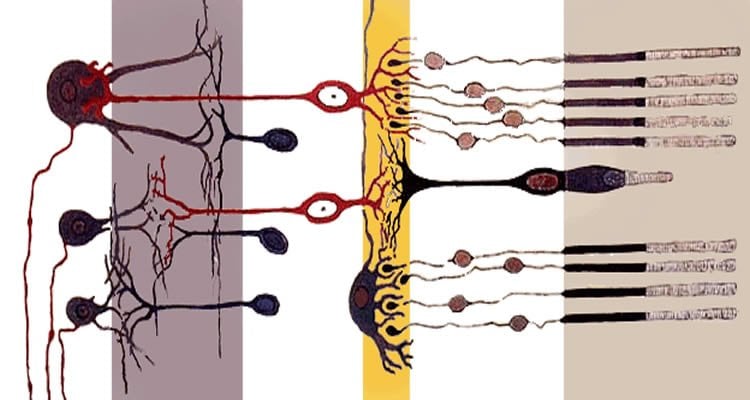As the time-honored tradition goes, many lovebirds may be seeing red this Valentine’s Day. The color of blood and fire, red has long been synonymous with intense emotions, such as love, passion, desire, strength, and vitality.
However, unbeknownst to valentines and their admirers, two individuals looking at the same red roses will rarely perceive the same exact color, according to Sarah Allred, an assistant professor of psychology at Rutgers University–Camden.
“When you look at peoples’ retinas, they are comprised mostly of photoreceptors that are sensitive to reds and greens, but the ratios of these receptors can vary dramatically across individuals,” explains Allred. “Consequently, people will have the same general perception of colors, but will differ when you focus on these colors more precisely.”
To compound matters further, color perception is a complicated process and one that is often measured by flawed research techniques, posits the Rutgers–Camden researcher. Allred and Jonathan Flombaum, an assistant professor of psychology at Johns Hopkins University, explore this process and current research techniques, and offer suggestions for improving methods, in their research article, “Relating Color Working Memory and Color Perception,” published in the November issue of Trends in Cognitive Sciences.
Allred explains that, when assessing an individual’s color working memory, researchers will routinely blame memory for errors in responses, rather than consider perception as a possible culprit.
She likens the complex relationship between perception and memory to two people disagreeing over something that happened in the past. There are three stages to the process, she notes: something that actually happened, the individuals’ perceptions of the event at the time that it happened, and what the individuals remember afterwards.
“So when you think about two people who are disagreeing about an event in the past, they may have actually perceived the event differently,” she says. “In the same respect, researchers need to measure perception first. Then it can be determined how memory relates to what was perceived.”
Allred contends that researchers studying perception and memory don’t typically consider all the guessing that the human brain must do on a consistent basis in order to figure out what is present in the world – and color is no exception.
“The rules that govern the mapping between what’s in the world and what we perceive are very complicated and there are lots of ways that we can make mistakes,” says the Rutgers–Camden researcher.

She explains that the human eye contains three different photoreceptors that are receptive to red, green, and blue wavelengths. After complicated processing in the brain, the human brain takes the responses of these three photoreceptor types and combines them to yield the perception of potentially millions of colors. Television sets use this principal to create a countless range of colors simply by changing the ratios of red, green, and blue phosphors.
“You think that you are seeing everything that is out there in the world, but it is actually only the changing ratios of these three kinds of light,” she says.
In most experiments concerning working memory, she notes, subjects are shown colors and asked to reproduce the colors as they remembered them. However, in addition to remembering colors differently, people might also perceive them differently. Since current research techniques measure memory only, and not perception, researchers have no way to tell whether an “incorrect” response is based on memory, perception, or some combination of the two.
“So is memory amplifying the same mistakes that we make in perception or does memory itself introduce new errors?” Allred asks.
She posits that researchers studying color perception and memory can take several important steps in order to ensure greater accuracy. For starters, she says, computer monitors used to present colors should be calibrated correctly. “Often, the colors that are shown on the screen aren’t actually what the researchers think that they are showing on the screen,” she says.
Ideally, researchers should then conduct a series of experiments to determine how colors are perceived and subsequently how they are remembered, and only then make inferences about memory.
“It’s a huge pathway,” she says. “What we demonstrated is, if you don’t do that pathway, there are really big repercussions for your results.”
However, realizing that many researchers studying working memory don’t have expensive calibration equipment, or lack sufficient expertise on color, Allred and Flombaum have applied for grant funding to create an inexpensive calibration package that can be applied to monitors and used to predict variability in observers’ responses based on several categorization experiments.
She explains that a lot of variability in perception can be predicted by color categories. Consequently, if observers are asked to name colors present on monitors, much of that variability can be predicted. Allred and Flombaum thus developed a model that can take color perception into account mathematically, eliminating the need to measure each color separately and, instead, predicting variability based on color categories.
“What we are saying is, ‘If you don’t do it right, there are going to be big problems, but here is a shortcut that you can use to get most of it right,’” says Allred.
Contact: Sarah Allred – Rutgers Camden
Source: Rutgers Camden press release
Image Source: The image is credited to Santiago Ramón y Cajal and is in the public domain
Original Research: Abstract for “Relating color working memory and color perception” by Sarah R. Allred and Jonathan I. Flombaum in Trends in Cognitive Sciences. Published online November 2014 doi:10.1016/j.tics.2014.06.002







